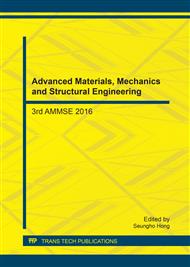p.64
p.71
p.78
p.84
p.89
p.93
p.102
p.107
p.112
Singlet Oxygen Production of Photocatalytic Ir(III) Complex Impregnated unto Zeolite NaY Supercages
Abstract:
Trivalent iridium complexes have been recently studied due to the extent of its overlap with the solar spectrum as well as the accessibility of its ligand-ligand charge transfer (LLCT) transition in the UV region. Entrapment of the complex inside faujasitic zeolite NaY converts the dye molecule into a heterogeneous catalyst that has greater stability and usability than the free complex. Ship-in-a-bottle assemblies of trisphenanthroline iridium (III) complex unto zeolite NaY were found to produce singlet oxygen upon illumination. The possible use of these solid-state catalyst for waste water treatment was examined by using 9,10-dimethylanthracene (DMA) as a chemical trap for singlet oxygen. The degradation spectra was observed to be pseudo-first order with respect to DMA. Varying the time of illumination showed that the amount of DMA degraded was directly dependent on the length of UV irradiation.
Info:
Periodical:
Pages:
89-92
Citation:
Online since:
February 2017
Price:
Сopyright:
© 2017 Trans Tech Publications Ltd. All Rights Reserved
Share:
Citation:


